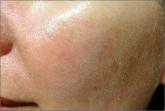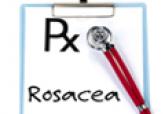Blog

Red Is Wrong; In the Red Also Is Wrong
A recent study in the Journal of Drugs in Dermatology (2014;13:56-61) featured long-term data regarding use of brimonidine gel, which was...
Dr. Rossi is an Assistant Attending at Memorial Sloan Kettering Cancer Center, New York, New York, and an Assistant Professor in the Department of Dermatology at Weill Cornell Medical College, New York, New York.
Dr. Rossi reports no conflicts of interest in relation to this post.


Tanghetti et al (J Drugs Dermatol. 2015;14:33-40) discuss the use of topical brimonidine for the redness associated with rosacea. Brimonidine is the newest therapeutic to combat the erythema associated with rosacea of all subtypes. It is a topical α2-adrenergic agonist that causes peripheral vasoconstriction via a direct effect on smooth muscle receptors. The authors describe 2 large studies that studied the safety and efficacy of topical brimonidine and also give consensus recommendations regarding optimal utilization while minimizing adverse effects, such as the “rebound” phenomena described. It is important to note that it is not a traditional rebound effect, as it does not occur once the medication has stopped; however, it is a worsening of the erythema during active treatment with brimonidine. The authors discuss the various cases reported to the manufacturer after the medication was released. The most frequently associated side effects reported were erythema in almost all cases, flushing, feeling of heat or burning sensation, and rarely pain. Other issues such as dermatitis, pruritus, facial swelling, and pallor were seen in less than 10% of reports each.
These rebound effects were most likely to occur in the first 15 days after initiation of therapy, mainly in the first week. They also were noticed at 2 other time points—3 to 6 hours and 10 to 12 hours after application—which allowed the identification of 2 types of reactions based on the time to onset postapplication: appearing within 3 to 6 hours and observed after 10 to 12 hours. These events have been given new names. “Paradoxical erythema” is the redness appearing within 3 to 6 hours after application, which can be worse than baseline. “Exaggerated recurrence of erythema” is the redness that is greater than baseline and occurs as therapy wears off, approximately 10 to 12 hours after application. Allergic contact dermatitis also has been associated with the medication and can therefore be a source of redness 3 to 4 months after initiation.
What’s the issue?
The erythema associated with rosacea can be a distressing symptom for both the patient and the dermatologist. It can be difficult to treat and quite often recalcitrant to multiple treatments. Although pulsed dye laser is an effective therapy for treating telangiectases and dilated blood vessels, it can be expensive for many patients. Topical brimonidine represents a novel therapeutic to combat one of the most remarkable symptoms of rosacea. However, because of the possibility of this increased redness after use, Tanghetti et al suggest the following treatment algorithm:
What has been your experience with brimonidine gel and how do you manage these patients?

A recent study in the Journal of Drugs in Dermatology (2014;13:56-61) featured long-term data regarding use of brimonidine gel, which was...

Rosacea is a chronic inflammatory disease that predominantly affects facial skin in light-skinned individuals and can be divided into 4 subtypes....

The motivation for rosacea patients to seek and adhere to treatment is not well characterized.
